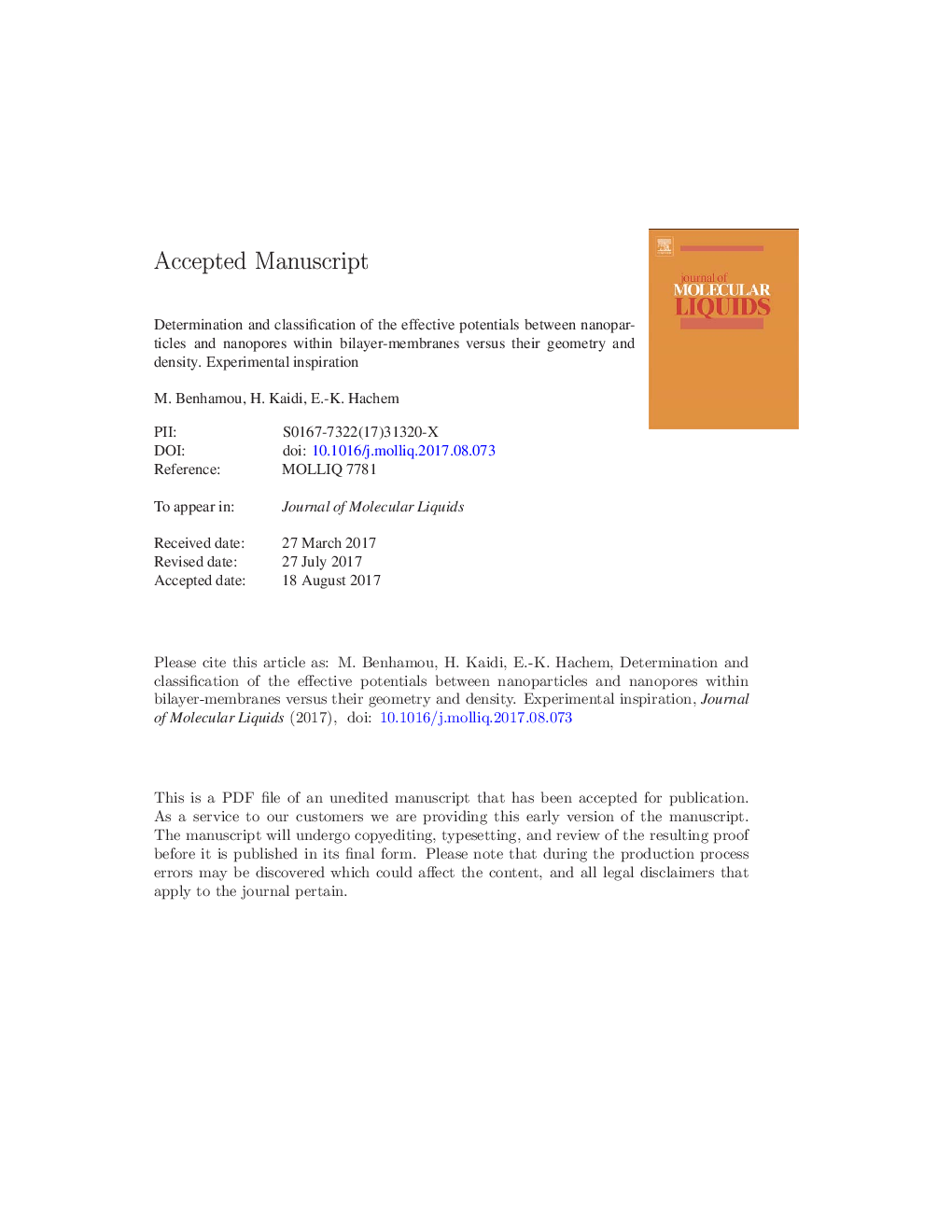| Article ID | Journal | Published Year | Pages | File Type |
|---|---|---|---|---|
| 5408011 | Journal of Molecular Liquids | 2017 | 36 Pages |
Abstract
The purpose of this work is a quantitative determination of the effective interaction potential, upon distance, between inert nanoparticles or (parallel or crossed) nanopores which are inserted in a bilayer-membrane. The expected effective pair-potential is the sum of a repulsive part and an attractive one. The expression of this repulsive part that originates from the thermal fluctuations of the host bilayer-membrane, was put in evidence in some recent experiments using Synchrotron Small-angle X-ray scattering, and has a Gaussian form, with an amplitude and a range that depend essentially on the density of the nano-inclusions (nanoparticles or nanopores). The amplitude is simply the contact energy between the nano-inclusions, and the second represents the in-plan correlation length that measures the membrane fluctuations extent. The attractive part is the usual van der Waals attractive potential. First, we construct the expression of the effective pair-potentials. Second, we rigorously study their classification with respect to the relevant parameters of the problem, which are the geometric dimensions of the nano-inclusions (their radius, ratio aspect of the parallel nanopores, angle between crossed nanopores), their density and the Hamaker constant. In particular, we show the existence of a special value of the nano-inclusion density (critical coagulation density), at which a coagulation regime takes place. Below this critical density, the pair-potential presents an energy barrier that prevents the coagulation of the nano-inclusions, and above, such a potential is completely attractive. Finally, we emphasize that the achieved classification may serve to studying the structure and thermodynamics of these nano-inclusions, as a two-dimensional model fluid system.
Related Topics
Physical Sciences and Engineering
Chemistry
Physical and Theoretical Chemistry
Authors
M. Benhamou, H. Kaidi, E.-K. Hachem,
